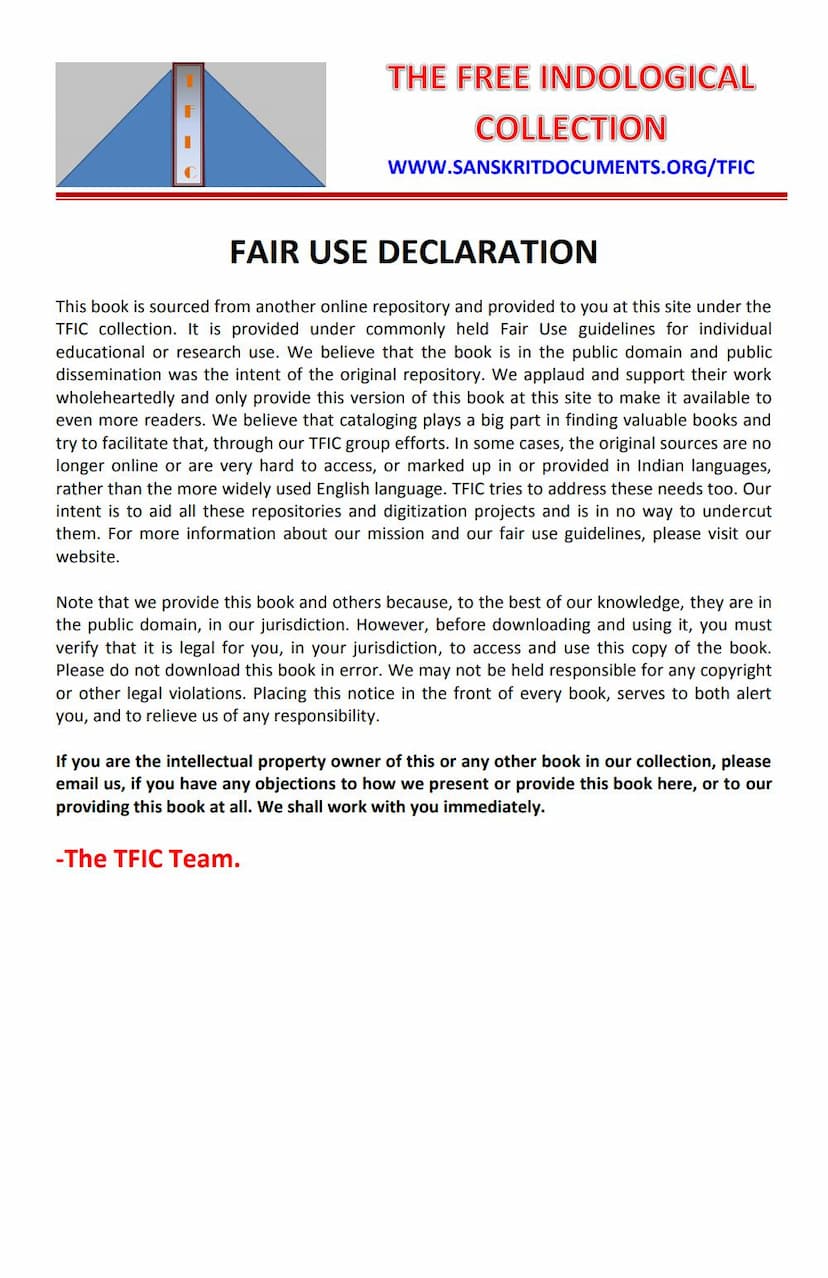Jain Kathamala
Added to library: September 2, 2025

Summary
This document is a comprehensive summary of the Jain text "Jain Kathamala," specifically focusing on the "Ram Katha" section. It appears to be a collection of Jain narratives based on the life of Rama, presented in a style that blends historical authenticity with engaging storytelling. The text emphasizes the Jain perspective on key events and characters, often comparing and contrasting it with prevalent Hindu traditions found in texts like the Valmiki Ramayana and Tulsidas' Ramcharitmanas.
Here's a breakdown of the key themes and content:
Overall Purpose and Philosophy:
- Drawn from Jain Tradition: The Kathamala aims to extract and present stories from the vast repository of Jain literature in a simple, understandable, and engaging language.
- Emphasis on Jain Principles: The narratives are presented through the lens of Jain philosophy, highlighting principles of non-violence (Ahimsa), self-control, righteousness, and detachment.
- Inspirational and Educational: The goal is to provide readers, from children to adults, with entertainment, inspiration, and moral guidance, enabling "manonmanyan" (self-reflection).
- Comparison and Nuance: The text acknowledges differences between Hindu and Jain accounts of Rama's life and characters, aiming to present a balanced view and allowing readers to draw lessons from various perspectives with a critical and discerning mind ("vivek buddhi").
Content of the "Ram Katha" Section:
The "Ram Katha" is presented in multiple volumes, focusing on different aspects:
-
Raksasvansh ki Utpatti (Origin of the Rakshasa Dynasty): This section delves into the Jain genealogical accounts of the Rakshasa lineage, tracing their origins from mythical figures like Tadtikesh and Meghavahana, highlighting their encounters with sages and the concepts of karma and rebirth. It also presents the origin of the Vanara lineage, noting differences in their portrayal compared to Vedic traditions.
-
Ayodhya ka Vaibhav (The Glory of Ayodhya): This volume likely covers the early life of Rama, his brothers, and the political and social landscape of Ayodhya. It mentions the birth of Rama and Lakshmana and the early life of Sita. It also touches upon the concept of renunciation and spiritual paths taken by characters like King Dashrath.
-
Lanka Vijay (Conquest of Lanka): This section details the events leading to and including the conquest of Lanka. It covers Sita's abduction (Seeta Haran), the search for her, the battles fought, and significant events like the defeat of Ravana and the victory of righteousness.
-
Tyag ke Path par (On the Path of Renunciation): This part likely focuses on the post-victory events, including the coronation of Vibhishana, the spiritual journeys of Bharata and Kaikeyi, and the eventual path of renunciation and liberation taken by Rama and others. It explores the concept of achieving Moksha through asceticism and detachment.
Key Jain Interpretations and Comparisons:
- Rama as a Mahapurusha: While acknowledging Rama's divine status in other traditions, the Jain perspective likely emphasizes him as a "Mahapurusha" (great soul) who attained spiritual perfection and became a "Bhagavan" (Tirthankara or Siddha) through his exemplary life and adherence to Jain principles. The emphasis is on him becoming divine through his actions and spiritual development.
- Character Differences:
- Rama: Jain tradition may portray Rama with a greater emphasis on human potential and spiritual development rather than solely as a divine avatar.
- Ravana: While acknowledging his negative actions like Sita's abduction, the Jain portrayal might present Ravana with more positive attributes like being a powerful ruler and a critic of violent rituals, while still condemning his actions regarding Sita.
- Vibhishana: Portrayed as a righteous and loyal brother who prioritizes justice and dharma, even if it means opposing his family.
- Kumbhakarna: Depicted as wise and critical of Ravana's actions, rather than just a sleeping giant.
- Hanuman: Presented as a powerful, virtuous, and intelligent human Vidyadhar (celestial being), rather than a monkey god. His celibacy is also likely interpreted differently.
- Sita: Her character might be portrayed with more agency and less emphasis on the "agni-pariksha" (trial by fire) as a purification ritual, and more on her inherent purity and strength.
- Kaikayi: Her character might be shown with more nuanced motivations than simply being a selfish or wicked queen.
- Rejection of Avatarvaad: The text likely contrasts the Jain concept of "Uvtarvaad" (becoming divine through personal effort and spiritual development) with the Vedic concept of "Avtarvaad" (divine incarnation descending from above).
- Emphasis on Purusharthavaad (Self-Effort): Jainism emphasizes the power of individual effort and karma in achieving liberation, contrasting with the "Kripavaad" (grace of God) found in other traditions.
- Ethical Framework: The narratives are rich with moral teachings, emphasizing truthfulness, non-violence, non-possession, and celibacy, which are central to the Jain path.
Structural Elements:
- Multiple Volumes: The "Jain Kathamala" is a series, with the "Ram Katha" occupying volumes 26 to 30.
- Authors and Editors: The work is attributed to Upadhyay Shri Madhukar Muni (author) and Shri Chand Surana 'Saras' (editor).
- Praise and Endorsements: The initial pages include endorsements from prominent Jain scholars and personalities like Acharya Shri Mananand Rishi, Upadhyay Amar Muni, Chandan Muni (Punjabi), Ramdhari Singh 'Dinkar', and Dr. Ramkumar Varma, highlighting the book's literary merit and spiritual value.
- Comparative Study: The section "Ram Katha: Ek Anushilan" is a detailed comparative study of the Ramayana narratives across Vedic, Buddhist, and Jain traditions, pointing out variations in plot, character portrayal, and philosophical underpinnings.
In essence, this document provides a Jain reinterpretation of the epic Ramayana, enriching it with the philosophical and ethical insights of Jainism. It serves as an important resource for understanding the Ramayana from a Jain perspective, highlighting the universal values of righteousness, compassion, and self-effort while adhering to the distinct doctrinal framework of Jainism.